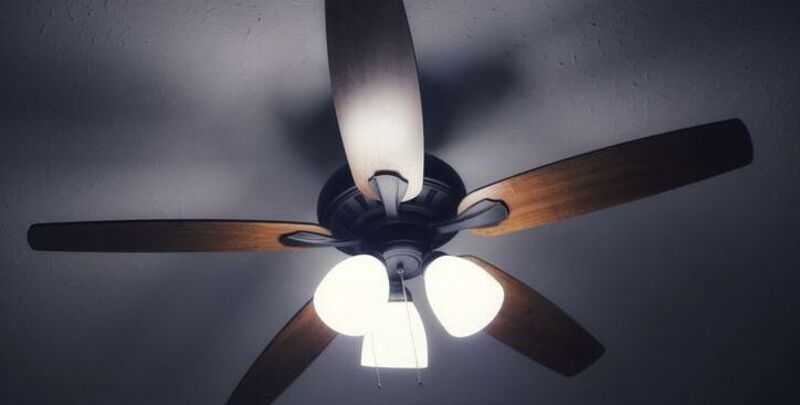
Things to Consider Before Installing Ceiling Fans with Lights
Installing a new ceiling fan with lights is an excellent way to enhance both the aesthetics and functionality of your home.
Whether you’re replacing an existing light fixture or installing a ceiling fan in a new location, it’s crucial to understand the process and considerations involved in ceiling fan installation.
From selecting the right fan blades to ensuring the proper ceiling mount, there are several factors to consider to avoid common issues like drooping blades or a ceiling fan falling.
By following the manufacturer’s instructions and hiring a licensed electrician, you can ensure a quality fan installation that provides optimal air circulation and energy savings, especially during hot summer days.
The Benefits of Ceiling Fans with Lights
Ceiling fans with lights offer numerous benefits that make them a popular choice for many homeowners. By combining both the fan and light in one fixture, they save space and enhance the aesthetics of any room.
Additionally, a ceiling fan light can improve air circulation, helping to keep your home comfortable while reducing reliance on air conditioners, thereby saving money on energy bills.
An energy-efficient ceiling fan with a quality fan installed correctly can also help distribute warm air during colder months, enhancing overall comfort. For those with low ceilings, choosing the right fan blades and mounting bracket is essential to ensure optimal performance and safety. Installing a ceiling fan with a remote control or a wall switch adds convenience, allowing you to adjust both the fan and light without hassle.
Outdoor ceiling fan installation is another advantage, especially for those with outdoor entertaining areas. Outdoor ceiling fans with integrated lights can create a pleasant atmosphere while providing the necessary illumination.
Ensuring the proper installation of a fan-rated electrical box and mounting screws is crucial to avoid issues like the fan’s motor malfunctioning or fan blades drooping. By selecting the right fan kits and following the manufacturer’s warranty guidelines, you can enjoy the long-term benefits of your new fan.

Choosing the Right Ceiling Fan
Selecting the right ceiling fan involves considering several factors to ensure optimal performance and safety. First, assess the size of the room and the ceiling space available.
Larger rooms require fans with longer ceiling fan blades and more powerful motors to circulate air effectively. For smaller spaces or rooms with low ceilings, opt for a fan with shorter blades and a compact design to avoid any safety hazards.
When you install a ceiling fan, ensure it complies with regulations and is compatible with the existing box and wiring. Proper structural support is crucial to prevent the fan from falling.
A fan installed incorrectly can lead to issues like unbalanced fan blades or motor’s housing problems. Always check the manufacturer’s guidelines and consider professional installation if needed.
For added functionality, consider fans with light kits that include light bulbs and light shades. This light combination can enhance both the aesthetics and utility of the fan. Additionally, selecting a fan with a wall switch or remote control provides convenience.
For outdoor entertaining areas, choose fans specifically designed for outdoor use to withstand the elements and provide reliable performance. By paying attention to these details, you can save money and ensure a quality installation.
Energy Efficiency and Cost Savings
Installing a ceiling fan with a light kit can significantly enhance energy efficiency and reduce costs. By circulating air efficiently, ceiling fans can make a room feel cooler, allowing you to rely less on your air conditioner. This simple adjustment can lead to substantial savings on electricity bills, especially during the hot Australian summers.
To maximise energy efficiency, choose a fan with high-speed settings and properly balanced fan blades. Ensure that the installation site has adequate structural support and new wiring if necessary. Proper installation, including securing the ceiling plate and ensuring the wire hanging is done correctly, can prevent issues and enhance performance.
In outdoor entertaining areas, ceiling fans can provide a comfortable breeze, reducing the need for additional cooling devices. A well-chosen fan with effective blade arms can circulate air effectively in both indoor and outdoor settings.
Implementing a light switch for easy control and ensuring the ground wire is properly connected are a few simple things that can enhance the overall efficiency and safety of your ceiling fan.
Types of Ceiling Fans with Lights
When you’re thinking about installing a ceiling fan with lights, knowing the types available can help you pick the perfect one for your space. Here are some common types:
- Standard ceiling fans with lights: These are the most typical models you’ll find in many homes. They often feature a central light fixture, surrounded by fan blades, and can come in a variety of styles and finishes to match your room’s decor.
- Low profile ceiling fans with lights: Ideal for rooms with lower ceilings, these fans are designed to sit flush against the ceiling, minimising space usage. The integrated lights are usually compact, maintaining a sleek and unobtrusive look.
- Chandelier ceiling fans: These fans add a touch of elegance, combining the functionality of a ceiling fan with the decorative appeal of a chandelier. They are perfect for dining areas or master bedrooms where style is just as important as air circulation.
- Outdoor ceiling fans with lights: Built to withstand the elements, these fans are suitable for patios or covered outdoor areas. The lights are typically sealed for extra protection against moisture and dust.
- Energy-efficient LED ceiling fans: These fans come equipped with LED lights that consume less energy and last longer than traditional bulbs. They are a great choice for eco-conscious homeowners looking to reduce their energy footprint.
Each type offers unique advantages, so consider your space, style and functional needs when choosing the right ceiling fan with lights for your home. Following the manufacturer’s guidelines and consulting a professional can prevent issues like fan blades wobbling or the fan light not functioning correctly.

Remote-Controlled Ceiling Fans
Remote-controlled ceiling fans offer a blend of convenience and technology that can make any room more comfortable and easier to manage.
Here’s why you might consider choosing one:
- Ease of use: With a remote-controlled ceiling fan, you can adjust the speed, turn it on or off, and control the lighting without ever having to get up. This is especially handy in bedrooms or high-ceiling rooms where reaching the fan manually can be a chore.
- Variety of features: Many remote-controlled fans come with additional features such as dimming lights, changing fan direction, and setting timers. These options enhance functionality and allow for a customised environment.
- Safety: For homes with elderly residents or those with limited mobility, a remote-controlled fan is a safe alternative that eliminates the need for stretching or climbing to operate the fan.
- Design and style: Remote-controlled fans are available in a wide range of styles, from modern to traditional, fitting seamlessly into your home decor. The absence of pull chains gives these fans a cleaner, more streamlined look.
Choosing a remote-controlled ceiling fan can bring a touch of modern convenience to your daily life, making it easier to create a comfortable and inviting atmosphere in any room.
Maintenance and Care
Regular maintenance and care are essential to keep your ceiling fan with lights functioning efficiently and safely. Start by dusting the fan blades and light shades regularly to prevent dust buildup, which can affect performance and air quality.
Ensure the light bulbs are securely fitted and replace them as needed to maintain optimal lighting.
Periodically check the fan’s motor and mounting bracket for any signs of wear or looseness. Tighten any loose screws and inspect the wiring connections to ensure everything is secure. Following these simple maintenance steps can extend the lifespan of your ceiling fan and keep it running smoothly.
Is a Ceiling Fan with Lights Right for You?
Installing a ceiling fan with lights is a practical and stylish addition to any home, providing both cooling and illumination. By carefully selecting the right fan, ensuring proper installation, and maintaining it regularly, you can enjoy the benefits of improved air circulation and energy efficiency.
Remember to follow safety guidelines and consider professional help if needed to avoid issues like fan blades wobbling or incorrect wiring. With the right approach, a ceiling fan with lights can enhance your home’s comfort and aesthetics for years to come.
Please note: This information is provided for advice purposes only. Regulations differ from state to state, so please consult your local authorities or an industry professional before proceeding with any work. See our Terms & Conditions here.